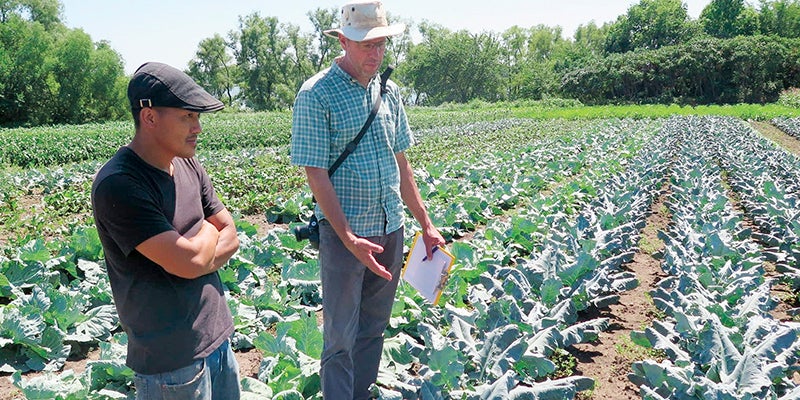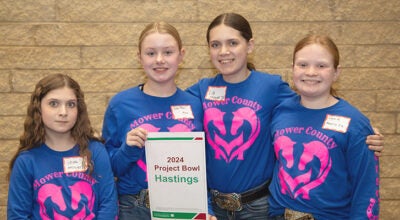‘Micro-farmers’ face drought without safety net
Published 5:07 pm Tuesday, August 17, 2021

- David Van Eeckhout (right), the farm director for the Good Acre Food Hub in St. Paul, and farmer Pheng Yang survey Yang's crops. Farmers who work just a few acres of land without crop insurance or other programs designed to help much larger operations are facing the dual challenges of adverse weather and the ongoing pandemic.Mark Zdechlik | MPR News
|
Getting your Trinity Audio player ready...
|
By Mark Zdechlik
If you frequent farmers’ markets, you’ve probably noticed vegetables have not been as plentiful as in years past. The timing has also been off. Some foods quickly came and went. Others were weeks late. Some — including onions and potatoes — are much smaller than usual.
“This year is no good. This year [is a] really bad year. We got no rain, too dry, and so hot too,” said Teng Yang, who with his wife Amphon Thor, grows vegetables on 9 acres less than half an hour south of St. Paul.
“We’ve got to haul water over in the field over there,” Yang said at a farmer’s market in a Falcon Heights church parking lot about the land he farms. “By hand. Water and go back to the truck and go again.”
A couple of stalls down, 91-year-old LaQuita Rolf said it’s also been rough going for her and her family.
“Oh, my husband is out here watering, was watering every day,” Rolf said. “And our well, our pump, just went out a couple of weeks ago.”
They grow vegetables on land they own 45 minutes north of the Twin Cities.
“Our first crops did not germinate,” Rolf said. “The carrots and the beets — we had total crop failure on it. And I don’t know, we’ve got some carrots and some rutabagas, but I’m not sure if they’re even going to make it this year.”
David Van Eeckhout, the farm director for the Good Acre Food Hub in St.Paul, consults with about 50 growers. He said Hmong farmers face heightened challenges because they are more likely than others to rent the land they sow.
“They can’t put in the infrastructure because they don’t own the land. So they can’t drill a well, because they don’t have the deed to that land, you can’t legally do that,” Van Eeckhout said.
“And you don’t want to make that investment in somebody else’s property. So, you know, fundamentally, that’s probably the biggest factor is, if you can’t do those type of improvements to deal with the ups and downs of the weather on your land, you are always going to be more vulnerable to them.”
There are probably thousands of small farmers — known as micro-farmers — in Minnesota, and probably hundreds of them are Hmong, but no one knows the exact numbers.
Minnesota Farmers’ Market Association executive director Kathy Zeman said efforts are underway to quantify small farming in Minnesota. She and others are hoping more information about its scope will inspire agriculture officials to include them in government assistance programs because they’re currently on their own.
“This is not going to be the last drought we have, right? This is not going to be the last climate chaos we see,” Zeman said. “Therefore, let’s try to think ahead and set up those systems so as we look at who is growing our produce, and who our farmers are in our counties. We need to broaden those programs out, so that we are helping all of our farmers.”
In Montgomery, about an hour south of the Twin Cities, Pheng Yang and his family work a plot of land. They work another one, too, north of the metro area.
“It’s tough,” Yang said. “I mean, it’s no rain, a lot of stuff that didn’t grow up. We planted lots of carrots, and then none of them showed up.”
And even with good crops, he has to sell them to make money. Business at his farm-side vegetable stand is about half of what it was before the pandemic, Yang said. He and others also say the volume of farmer’s market shoppers has not yet rebounded to pre-pandemic levels.
Yang said it’s too soon to predict whether he’ll turn a profit this year, but he still has hope.
“Tomatoes are nice this year,” Yang said. “They like dry weather, so any year that is dry, tomatoes do really well.”



